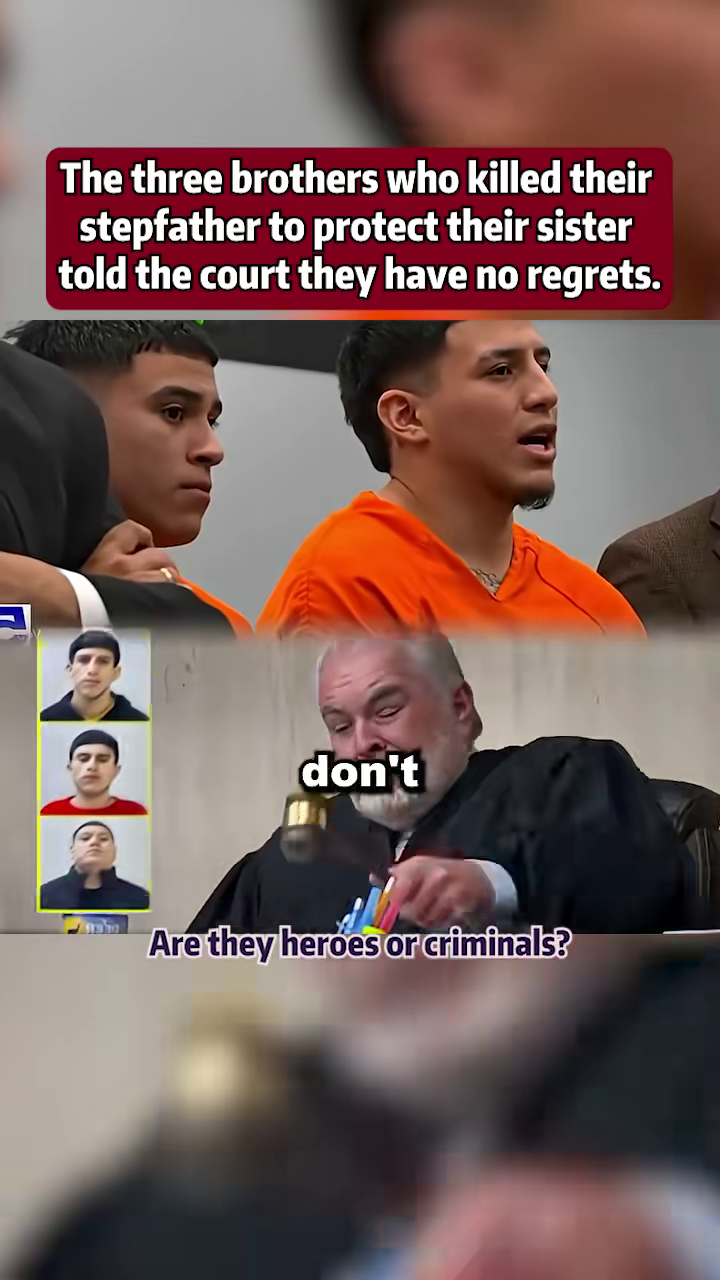The shocking story of three teenagers from Texas has ignited nationwide debate about justice, morality, and protection of children. In January 2022, Alejandro and Christian Treviño, along with their friend Juan Eduardo Melendez, allegedly killed their stepfather, Gabriel Quintanilla, after learning he had been sexually abusing their 9-year-old half-sister. The incident raises complex questions about the line between heroism and criminality, and how the law should handle such morally charged cases.
The Victim and the Accused
Gabriel Quintanilla, the victim, had a troubling history. Police confirmed he was wanted on an unrelated warrant for continuous sexual abuse of a child at the time of his death. This fact has played a significant role in public perception, with many arguing that the teenagers were acting to protect their sister from imminent harm.
The accused teens were:
-
Alejandro Treviño
-
Christian Treviño
-
Juan Eduardo Melendez (friend of the brothers)
The trio allegedly beat Quintanilla to death, claiming they were defending the younger sister from ongoing abuse. Authorities charged them with capital murder and aggravated assault, reflecting the seriousness of the offense under Texas law.
The Crime in Context
According to court reports and news coverage:
-
The attack occurred at the family home, where the teens lived with their stepfather and younger half-sister.
-
The teens admitted involvement but claimed their actions were motivated by a desire to protect their sibling.
-
Public opinion has been deeply divided: some view the teens as vigilante heroes, while others insist that taking a life cannot be justified legally, no matter the circumstances.
This case exemplifies the ethical complexity of family-based crimes, where victims and perpetrators exist within the same household, and justice, morality, and law intersect in difficult ways.
Legal Proceedings and Charges
Following their arrest, the teens faced serious legal consequences:
-
Capital murder charges: Because the act involved a homicide with aggravating circumstances, Texas law allows prosecutors to pursue the death penalty or life imprisonment for offenders, even juveniles in certain cases.
-
Aggravated assault charges: The nature of the beating and intent to harm were significant factors in these charges.
-
Potential juvenile vs. adult trial: Depending on their ages and the court’s ruling, the teens could be tried as adults, exposing them to harsher sentences.
The legal system must balance two priorities:
-
Upholding the law by punishing acts of homicide.
-
Considering the context of the crime, specifically the teens’ alleged motive to protect a vulnerable child.
Public Reaction and Moral Debate
The case has sparked intense debate online and in local communities:
-
Supporters argue the teens acted bravely, intervening when the system may have failed to protect their sister. An online petition was created calling for their release, citing the moral imperative to defend a child from sexual abuse.
-
Critics stress that vigilante justice is legally unacceptable, and allowing such actions could undermine the rule of law. They argue that the teens should face consequences for taking a life, regardless of the circumstances.
News outlets have highlighted the emotional impact on the community, particularly the fear and outrage over ongoing child abuse, and the conflicting feelings about teenagers taking matters into their own hands.
The Victim’s Background and Abuse Allegations
Authorities have provided more context about Quintanilla’s history:
-
He was under investigation and had an active warrant for continuous sexual abuse of a child.
-
These details have fueled the perception that the teens’ actions were preemptive defense rather than malicious intent.
-
Despite this, Texas law requires that allegations be handled through the judicial system, meaning even morally understandable actions like protecting a sibling cannot automatically excuse homicide.
The video commentary emphasizes the emotional and ethical weight of the situation, showing how communities wrestle with the distinction between justice and compassion.
Ethical and Legal Questions
The Quintanilla case highlights several challenging questions:
-
Should teenagers ever be excused for killing to protect a family member?
-
Proponents cite self-defense and protection of minors as justifications.
-
Critics warn that legal exceptions could encourage vigilante actions and dangerous precedent.
-
-
How should the law weigh motive vs. outcome?
-
While the motive (protecting a child) is sympathetic, the outcome (a homicide) is legally severe.
-
Courts must navigate this tension, balancing empathy with accountability.
-
-
Impact on the younger sister:
-
The children’s well-being remains central. Legal experts note that witnessing violence, even for protective reasons, can traumatize children further, highlighting the tragic consequences of family-based crimes.
-
The Broader Implications
This case is part of a larger conversation about child protection, justice, and moral responsibility:
-
Experts in juvenile justice stress the importance of reporting abuse and intervention by social services, rather than relying on minors to act as enforcers.
-
However, cases like this demonstrate that failures in the system can push children to take extreme measures.
-
The case also raises awareness of juvenile sentencing and ethical dilemmas, as society debates how to punish acts that stem from morally understandable intentions.
Conclusion
The killing of Gabriel Quintanilla by three Texas teenagers forces a difficult question: Are they heroes or criminals?
-
On one hand, their actions may have prevented further sexual abuse and protected a vulnerable child.
-
On the other hand, they committed a premeditated homicide, which the legal system cannot ignore.
The case will likely influence future discussions about juvenile crime, moral responsibility, and protective acts within families. It underscores the tension between law and ethics, highlighting how real-life scenarios often blur the line between right and wrong.
As the legal process continues, one question remains: How should justice account for morality, motive, and the protection of the innocent, especially when the perpetrators are teenagers?

